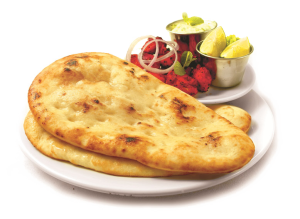What is the most popular Indian food? The reason Indian’s cuisine is famous
most popular Indian food

Most popular Indian food:
Indian cuisine has a huge variety of tastes, spices, and cuisines and varies greatly from place to region. Given that tastes vary between people and geographical areas, it is challenging to identify one “most popular” Indian dish. Nevertheless, a few dishes are well-known and adored both in India and around the world:
- Biryani:
- Basmati rice, marinated meat (such as chicken, lamb, or beef), and a combination of spices are the main ingredients in the rich and fragrant rice dish known as biryani. It is favored for parties and special events.
- Tandoori Chicken:
- Tandoori chicken is cooked in a tandoor (clay oven) after being marinated in a combination of yogurt and spices. It is renowned for its soft texture and smokey taste.
- Paneer Tikka:
- Indian cottage cheese, or paneer, is marinated and grilled to make the famous vegetarian meal paneer tikka, which is frequently accompanied by mint chutney.
- Butter Chicken:
- Butter chicken is a tomato-based curry with soft chicken chunks that is creamy and gently spicy. This meal is a favorite among North Indians.
- Chole Bhature:
- A North Indian meal called chole bhature consists of a hot chickpea stew (chole) and bread that has been deep-fried. It is a well-liked street snack.
- Samosas:
- Samosas are fried pastry stuffed with spicy peas, potatoes, and occasionally meat. They are a typical appetizer and snack.
- Dosa:
- Dosas are thin, crispy pancakes made of fermented rice and lentils that are frequently eaten with chutneys and sambar, a hot lentil soup.
- Rogan Josh:
- A thick, fragrant liquid is used to boil the soft chunks of meat (typically lamb or mutton) in the savory Kashmiri stew known as rogan josh.
- Naan:
- Indian flatbread known as naan is soft and fluffy, typically baked in a tandoor, and frequently served with curries or kebabs.
- Palak Paneer:
- Palak paneer is a creamy, spice-seasoned spinach and paneer stew. It’s a well-liked vegetarian choice.
- Masala Dosa:
- A spicy potato mixture is placed within a fermented rice and lentil crepe called a masala dosa. It is a common ingredient in South Indian food.
- Gulab Jamun:
- A delicious dish called gulab jamun is formed of fried dough balls that have been covered in sugar syrup. It’s a favorite dessert for festivals and events.
Indian food is renowned for its variety of dishes, use of flavorful spices, and rich tastes. It’s crucial to keep in mind that this list merely touches the surface of the wonderful and diverse Indian cuisine available.

The reason Indian’s cuisine is famous:
Due to a variety of variables that contribute to its distinctive appeal, rich tastes, and vast appeal, Indian food is well known and adored around the world. Here are the main explanations for why Indian food has become popular over the world:
- Diverse Range of Flavors and Spices:
- Indian food is recognized for its rich, varied tastes, which are produced via the expert use of a vast variety of spices, herbs, and seasonings. In many Indian cuisines, the combination of sweet, salty, sour, bitter, and spicy tastes results in a singular and wonderful gourmet experience.
- Culinary Techniques and Expertise:
- Indian chefs and home cooks use culinary skills and methods that have been practiced for ages, demonstrating their capacity to combine and balance tastes, textures, and scents to produce exquisite dishes.
- Variety of Dishes and Regional Specialties:
- Due to India’s extensive and varied terrain, there are many different culinary customs and regional delicacies. The distinct foods, ingredients, and cooking techniques available in each location add to the overall richness and variety of Indian cuisine.
- Vegetarian and Vegan Options:
- Indian food has a wide variety of vegetarian and vegan alternatives, which appeals to people on plant-based diets or looking for healthier eating options.
- Historical and Cultural Heritage:
- Indian food has a strong connection to the nation’s rich history, culture, and traditions. The authenticity of Indian cuisine has been preserved via the generations-old transmission of traditional cooking techniques, recipes, and eating customs.
- Emphasis on Fresh and Natural Ingredients:
- Indian cuisine puts a lot of focus on using foods that are in season, fresh, and locally sourced. Indian cuisine uses a lot of vegetables, fruits, legumes, grains, and spices, which enhances both the flavor and nutritional value of the food.
- Spices and Health Benefits:
- Numerous Indian spices and herbs are well-known for having anti-inflammatory, antioxidant, and digestive characteristics as well as other possible health advantages. Spices like cardamom, cumin, coriander, and turmeric improve flavor while also increasing the nutritional content of food.
- Global Indian Diaspora:
- Indians living abroad have greatly contributed to the globalization of Indian food. People from other cultures have been introduced to and made familiar with Indian cuisine via Indian restaurants and eateries, which are frequently managed by Indian expats.
- Influence on Global Cuisine:
- The world’s food has been inspired by and enriched by Indian cuisine. International cuisines have acquired and modified a variety of versions of dishes including curry, biryani, and samosas.
- Culinary Tourism and Food Festivals:
- In order to enjoy the rich flavors and distinctive culinary offers of Indian cuisine, travelers and food aficionados are drawn to the country through culinary tourism, food festivals, and Indian restaurants.


Overall, Indian food has become a global favorite, capturing the taste buds of millions of people throughout the world because to its rich diversity, cultural importance, and flavorful spice blends.
